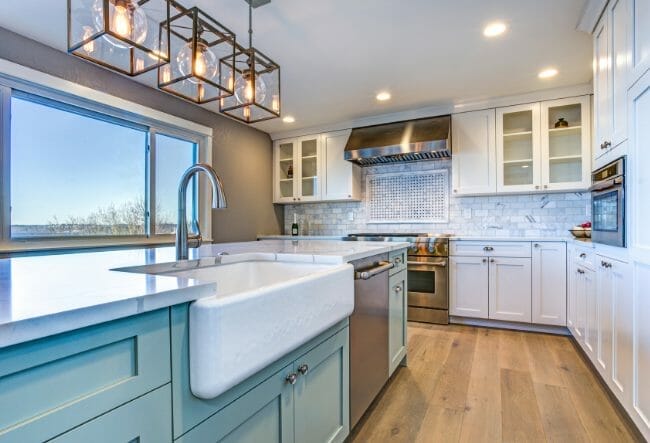Buying a new home can seem like a daunting process for first-time homebuyers. Even for those who have owned a home before, it can be easy to overlook the cost involved when rushing into buying your dream home. Combine that with a housing market that is at a record high, and buyers can feel pressured to make decisions quickly without understanding the full implications of their choices. If you’re looking to jump into the sizzling-hot housing market this year, it’s more important than ever to have a firm understanding of how much you can afford to spend on your home. Your decision impacts both your current situation and your future.
The 28/36 Rule
This well-known rule within the housing and mortgage industries says you should spend no more than 28% of your total income (before taxes) on your mortgage and no more than 36% of total income on all debts (mortgage included). Using the 28% rule is an easy way for homebuyers to get a general idea of what a monthly mortgage payment could look like.
If your total monthly income is $5,000 (an annual income of $60,000), then you shouldn’t spend more than $1,786 on your monthly mortgage. The 36% part of the rule helps potential homebuyers consider all debts owed, including student loan debt, credit card debt, and any other debts carried. Keeping your total debt to 36% or less of your total income will help ensure you don’t become overwhelmed by your mortgage payments and risk losing your home.

DTI Ratio
The Debt-To-Income (DTI) Ratio is a valuable tool to know because your mortgage lender will utilize it to estimate your loan. Your DTI is simply your total monthly debt payment divided by your total monthly income.
Once you have this number, multiply by 100 to see the percentage of debt to income you carry. If it is more than 36%, you’re above the recommended ratio and may need to work to lower your debt before you apply for a mortgage and buy a new home.
Example: Your total monthly debt payment includes a $1,000 mortgage payment, $200 in student loans, $500 in auto loans and $100 in credit card debt, and your total monthly income is $5,000. Your DTI ratio would be 36%
1,000 + 200 + 500 + 100 = 1,800
5,000 = .36 x 100 = 36%
A lower DTI ratio simply reassures lenders that you can manage your debt well and likely will make your monthly mortgage payments. A higher DTI ratio indicates you may struggle with debt and need a lower mortgage or lower your debts before taking on a mortgage.
Understand the Total Cost of Your Home
Your mortgage payment is an important number to know. After all, you’ll be paying it each month. However, there are other costs to purchasing a home you shouldn’t overlook initially. First, consider how much you’ll pay down on your new home. If you put down less than 20% of the home’s total price, you’ll likely be required to carry Private Mortgage Insurance in addition to your mortgage.
Private mortgage insurance covers the lender as a home loan is considered a higher risk. You’ll pay between 0.25% and 2.0% of your loan balance each year until your down payment plus the loan principal you’ve paid equals 22% of the home’s purchase price.
Another cost to homeownership is homeowner’s insurance. Homeowner’s insurance in Arkansas runs an average of $1,800 a year and will be added to your mortgage as a monthly cost.
Don’t forget about property taxes. These are taxes due once a year to your local government to cover the cost of local services, roads and schools. While your property taxes are likely already factored into your mortgage, they don’t have to be. You can obtain a waiver if you’d rather keep the taxes out of your mortgage and pay them separately.
Finally, if you move into a neighborhood with a Homeowners Association (HOA) or Property Owners Association (POA), you’ll have yearly or monthly dues to pay outside your mortgage, which will go toward the cost of living in your neighborhood. Don’t forget to factor these costs into your budget when buying a home.

Consider Possible Repair or Renovation Costs
When you purchase a new home, you’ll likely want to make changes either before moving in or in the near future. These costs will be outside of your mortgage. Before you buy, consider how much you’re likely to spend on home renovations. If that number begins to grow beyond what you can afford, you may need to look for a home that’s more move-in ready.
All homes need repairs from time to time. Although it’s sometimes hard to predict when these repairs will happen, older homes that include older appliances, roofing and pipes are much more likely to need repairs sooner. The best way to consider home repairs is to factor a small amount into your monthly budget as you’re considering how much you can afford to pay for your home. Set this money aside each month until you need it. If you’re unable to save a little for home repairs each month, it could be a sign your budget is too tight to afford the home you’re considering.
Look to the Future
One final consideration before you purchase a new home is your future. While you can’t know what will happen five to ten years down the road, think about what your home needs may be in that period. Do you expect your family to grow? Will you need more bedrooms, a larger yard or a closer commute to work or family? While this doesn’t directly affect the cost of your home, it can dictate how long you’ll stay in your new home and selling a home too quickly after you purchase means you’ll lose out in realtor and closing costs. If you can’t see yourself in this home in five years, or you know it won’t meet the needs of your growing family, perhaps consider a different house now, if it’s within your budget.
When you’re ready to look for your new home, remember to calculate 28% of your total income, check your DTI ratio, and factor in outside costs before coming to a number you’re comfortable paying for your new home.

